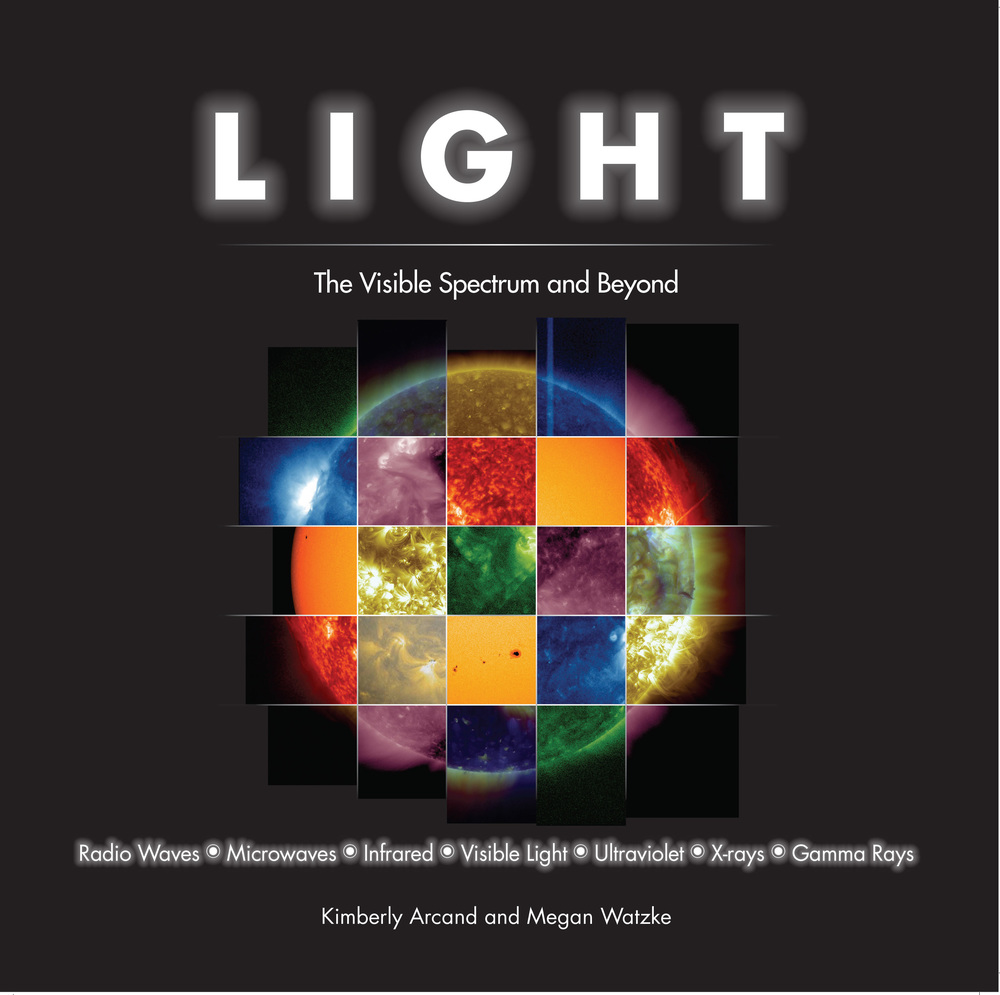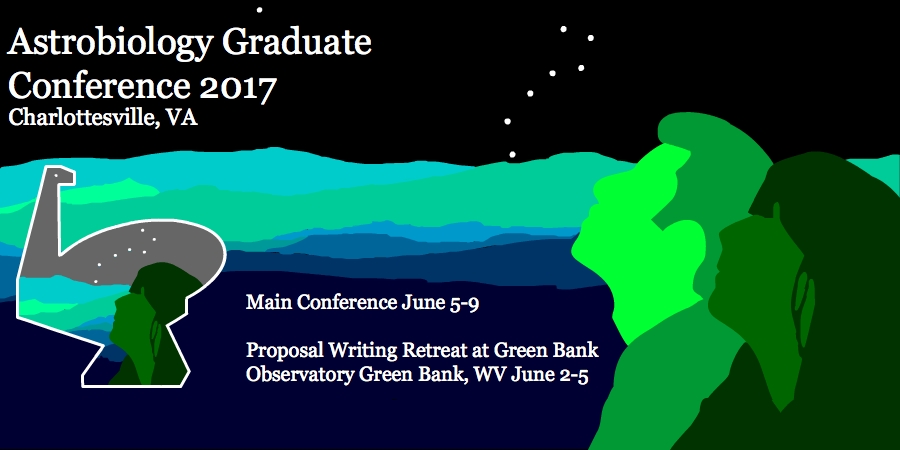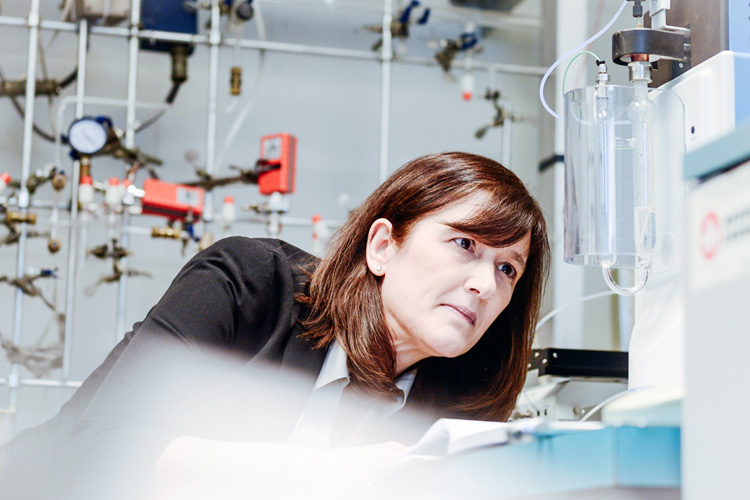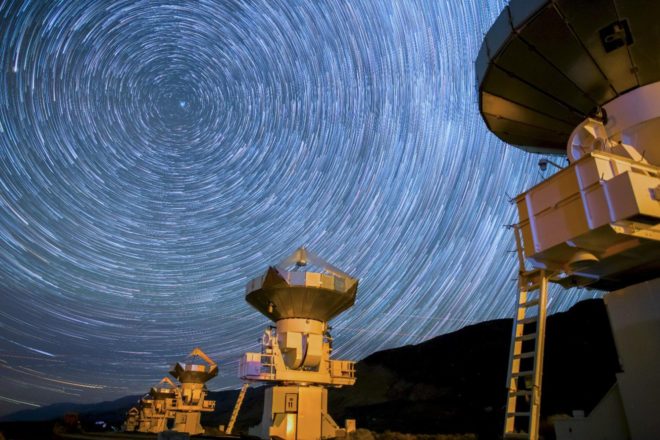Three billion years ago, Earth was a very different place.
-
Workshop Without Walls: Serpentinizing Systems Science

Compelling terrestrial evidence records active and ancient serpentinization, the process that occurs when ultramafic rocks come into contact with water. This process may have been active on the surface and subsurface of Mars, beneath the surface of icy satellites such as Enceladus and Europa, and beyond. On Earth, these geochemical interactions support distinct microbial ecosystems.
The purpose of this workshop is to highlight recent advances in understanding how Serpentinizing Systems function chemically and biologically within our Solar System.
Each day of this 3-day workshop will begin with an overview by a Theme Lead, followed by several invited talks (list below ...
Source: [NAI Seminars and Workshops]
January 23, 2017 • Posted by: Miki Huynh • Report issue
-
Upcoming Deadlines for AbSciCon 2017

Abstracts and Student Travel Grant Applications are due January 18, 2017. Opportunities are also available to be a mentor at AbSciCon 2017.Deadlines for the Astrobiology Science Conference (AbSciCon) 2017 are coming soon! Don’t miss your chance to participate in the conference in Mesa, Arizona on April 24–28, 2017.
Abstracts are due January 18, 2017. Instructions for submitting an abstract can be found at: http://www.hou.usra.edu/meetings/abscicon2017/program-abstracts/abstracts/. When filling out the submission form, students can additionally register for the poster competition. Further details about submitting a poster can be found at: http://www.hou.usra.edu/meetings/abscicon2017/program-abstracts/posters/.
Qualified students can apply for grants to cover travel expenses for AbSciCon 2017. Applications for ...
Source: [USRA]
January 11, 2017 • Posted by: Miki Huynh • Report issue
-
A Fertilizer Dearth Foiled Animal Evolution for Eons?

These 1.9 billion-year-old marine sediments are from the East Arm of the Great Slave Lake, Canada. Thousands of samples for this study were collected from the few places on Earth that have such remaining slivers of ancient seafloor. Credit: Georgia Tech / Yale - Reinhard / PlanavskyFor three billion years or more, the evolution of the first animal life on Earth was ready to happen, practically waiting in the wings. But the breathable oxygen it likely required wasn’t there, and a lack of simple nutrients may have been to blame.
Then came a fierce planetary metamorphosis. Roughly 800 million years ago, in the late Proterozoic Eon, phosphorus, a chemical element essential to all life, began to accumulate in shallow ocean zones near coastlines widely considered to be the birthplace of animals and other complex organisms, according to a new study by geoscientists from the Georgia ...
Source: [Georgia Tech]
January 10, 2017 • Written by: Ben Brumfield • Report issue
-
5th ELSI International Symposium: Expanding Views on the Emergence of the Biosphere

The 5th ELSI International Symposium, Expanding Views on the Emergence of the Biosphere, takes place January 11-13, 2017 in Tokyo, Japan. Talks will be webcast via SAGANet.org.The Earth-Life Science Institute (ELSI) presents its 5th International Symposium: Expanding Views on the Emergence of the Biosphere.
January 11th-13th, 9AM – 5PM (GMT+9)
Earth-Life Science Institute, Tokyo Institute of Technology, Japan
Conference website: www.elsi5sympo.orgThe emergence of a biosphere on Earth, and possibly elsewhere in the universe, remains one of the great unsolved scientific questions. Research into the origin and subsequent evolution of life takes place across an array of scientific disciplines, including but not limited to planetary sciences, astronomy, theoretical physics, chemistry and biology. The goal of this Symposium is to provide a forum for ...
Source: [Earth-Life Science Institute]
January 09, 2017 • Posted by: Miki Huynh • Report issue
-
Early Earth, the Pale Orange Dot, May Have Been Habitable

An image of Saturn's moon Titan, which is surrounded by a thick haze. Scientists speculate that a similar haze surrounding early Earth may have helped to make it habitable. Source: NASA.Before it became visible as the Pale Blue Dot, early Earth may have been aglow in orange, and this might have helped to make it habitable.
Scientists at the Virtual Planetary Laboratory, the NASA Astrobiology Institute (NAI) team based at the University of Washington, have developed a simulation of Earth during the Archaen era (3.8-2.5 billion years ago), with the atmosphere supporting an organic-rich and orange-colored haze that—shifting from previous haze studies— provided UV and temperature shielding to support the existence of life.
The paper, “The Pale Orange Dot: The Spectrum and Habitability of Hazy Archaen Earth,” was ...
Source: [Astrobiology]
January 04, 2017 • Written by: Miki Huynh • Report issue
-
Scott Sandford on the Space Show

Scott Sandford, PI of the NAI Team at the NASA Ames Research Center, joined David Livingston to discuss astrobiology.In August 2016, PI Scott Sandford of The Evolution of Prebiotic Chemical Complexity and the Organic Inventory of Protoplanetary Disks and Primordial Planets, the NASA Astrobiology Institute (NAI) team based at the NASA Ames Research Center, was a guest on the Space Show radio program hosted by David Livingston.
In the program, Sandford gave his explanation of the science of astrobiology and ways to think about the search for life in the Universe. Topics and questions also ranged from his research at the Ames labs, the OSIRIS-Rex mission, working with the NAI, and how aspiring astrobiologists can pursue a ...
Source: [The Space Show]
December 29, 2016 • Posted by: Miki Huynh • Report issue
-
Insights from Studies of Uranium Isotopes in Cryogenian Marine Carbonates

Images of carbonate components in marine cements from the Balcanoona reef in South Australia. Source: A. Hood, et. al., via Geological Society of America.In the effort to understand the history of Earth’s oxygenation, scientists have sought geochemical proxies, but studies don’t always fully consider how samples get preserved within the ancient environment and how that may affect results, especially when it comes to marine carbonates which can be altered during rock transitions and formations.
NASA Astrobiology Postdoctoral Program fellow Ashleigh Hood and the Alternative Earths team looked at uranium isotopes in samples from a reef complex in South Australia dating back over 635 millions ago. The research paper, “Integrated geochemical-petrographic insights from component-selective δ238U of Cryogenian marine carbonates” was featured on the cover ...
Source: [Geology]
December 27, 2016 • Written by: Miki Huynh • Report issue
-
Light: The Visible Spectrum and Beyond

Light: The Visible Spectrum and Beyond by Megan Watzke and Kimberly Acand. Published by Black Dog & Leventhal.Megan Watzke, Press Officer for NASA’s Chandra X-ray Observatory, and Kimberly Acand, Visualization Lead for the Chandra X-ray Observatory, have published a book entitled Light: The Visible Spectrum and Beyond.
Light is a visual guide to understanding electromagnetic radiation, in order of spectrum from radio waves to gamma rays, showing how light affects life on Earth and everything in the Universe. The book has made Forbes 2016 Top 10 Gifts for Lovers of Outer Space (along with David Grinspoon’s Earth in Human Hands).
Acand and Watzke have previously published books together exploring the Universe, and have been deeply ...
Source: [arcandwatzke.com]
December 22, 2016 • Written by: Miki Huynh • Report issue
-
Evolutionary Tradeoffs in the Cellular Composition of Bacteria

Image source: Wikimedia CommonsThe relationship between the cellular composition and size of a species of bacteria can determine how and how well it functions. Scientists with the Life Underground team at the University of Southern California have collected data on a diverse range of bacterial cells spanning five orders of magnitude to call out the cross-species connections between cellular form and function. The paper, “Evolutionary tradeoffs in cellular composition across diverse bacteria” is published in The ISME Journal.
The team compared cell volume against the amount of DNA, ribosomes, proteins, cell membrane, tRNA, and mRNA contained within, and focused on power-law relationships—how a ...
Source: [The ISME Journal]
December 21, 2016 • Written by: Miki Huynh • Report issue
-
Astrobiology Graduate Conference (AbGradCon) 2017

Astrobiology Graduate Conference (AbGradCon) 2017 takes place June 5-9, 2017 at the National Radio Astronomy Observatory in Charlottesville, VA.Applications to attend the 2017 Astrobiology Graduate Conference (AbGradCon) are now being accepted! The deadline to apply is February 6, 2017.
Host: National Radio Astronomy Observatory
When: June 5-9, 2017
Where: Charlottesville, VA
Website: http://www.abgradcon.org
Application Deadline: February 6, 2017AbGradCon provides a unique setting for astrobiologically-inclined graduate students and early career researchers to come together to share their research, collaborate, and network, without the presence of senior researchers and PIs. AbGradCon 2017 marks the thirteenth year of this conference.
This year, the conference will be held at the National Radio Astronomy Observatory in Charlottesville, VA. AbGradCon ...
Source: [AbGradCon]
December 16, 2016 • Posted by: Miki Huynh • Report issue
-
Barbara Sherwood Lollar Named to Order of Canada

Barbara Sherwood Lollar has been named as a Companion to the Order of Canada. Image source: Natural Sciences and Engineering Research Council of Canada (NSERC) via the University of Toronto.Geochemist Barbara Sherwood Lollar, professor of Earth Sciences at the University of Toronto and a past affiliate of the NASA Astrobiology Institute, has received the status of Companion of the Order of Canada, the highest level of honor for the Order. She is recognized for “revolutionary contributions to geochemistry, notably in the development of innovative mechanisms for groundwater remediation, and for her discovery of ancient fluids that hold implications for life on other planets.”
The ancient fluids are a reference to water trapped beneath the Earth’s surface released through mining fractures, which Sherwood Lollar and her team discovered ...
Source: [Governor General of Canada]
December 14, 2016 • Written by: Miki Huynh • Report issue
-
NASA New Frontiers Program AO Released

NASA’s Science Mission Directorate (SMD) is releasing the Announcement of Opportunity (AO) for New Frontiers Program mission investigations. The New Frontiers Program conducts Principal Investigator (PI)-led space science investigations in SMD’s planetary programs under a not-to-exceed cost cap for the PI-Managed Mission Cost. At the conclusion of Phase A concept studies, it is planned that one New Frontiers investigation will be selected to continue into subsequent mission phases. New Frontiers Program investigations must address NASA’s planetary science objectives as described in 2014 NASA Strategic Plan and the 2014 NASA Science Plan. Both documents are now available ...
Source: [NASA’s Science Mission Directorate]
December 12, 2016 • Posted by: Miki Huynh • Report issue
-
Earth in Human Hands
David Grinspoon, astrobiologist and first Baruch S. Blumberg NASA/Library of Congress Chair in Astrobiology, has published a new book. Earth in Human Hands: Shaping Our Planet’s Future, which covers Earth’s history and emergence as a habitable planet and the accelerated changes to Earth introduced by humans. In the trailer for his book, Grinspoon addresses our relationship to our planet and how we can develop a vision for the world we want to create in the future.
From the publisher, Hachette Book Group:
“For the first time in Earth’s history, our planet is experiencing a confluence of rapidly accelerating changes ...December 08, 2016 • Posted by: Miki Huynh • Report issue
-
2.5 Billion-Year-Old Bacteria Fossils Predate the Formation of Oxygen

Andrew Czaja indicates the layer of rock from which fossil bacteria were collected on a 2014 field excursion near the town of Kuruman in the Northern Cape Province of South Africa. Source: Aaron SatkoskiWhile researchers proclaim the first half of our 4.5 billion-year-old planet’s life as an important time for the development and evolution of early bacteria, evidence for these life forms remains sparse.
Recent geology research from the University of Cincinnati presents new evidence for bacteria found fossilized in two separate locations in the Northern Cape Province of South Africa.
“These are the oldest reported fossil sulfur bacteria to date,” says Andrew Czaja, UC assistant professor of geology. “And this discovery is helping us reveal a diversity of life and ecosystems that existed just prior to the Great Oxidation Event ...
Source: [University of Cincinnati]
December 07, 2016 • Written by: Melanie Schefft • Report issue
-
SETI Reconceived and Broadened; A Call for Community Proposals

A screenshot from a time lapse video of radio telescopes by Harun Mehmedinovic and Gavin Heffernan of Sunchaser Pictures that was shot at several different radio astronomy facilities—the Very Large Array (VLA) Observatory in New Mexico, Owens Valley Observatory in Owens Valley California, and Green Bank Observatory in West Virginia. All three of these facilities have been or are still being partly used by the SETI (Search for the Extraterrestrial Intelligence) program.Earlier this summer, Natalie Cabrol, the director of the Carl Sagan Center of the SETI Institute, described a new direction for her organization in Astrobiology Magazine, and I wrote a Many World column about the changes to come.
Cabrol’s “Alien Mindscapes – Perspective on the Search for Extraterrestrial Intelligence” laid out a plan for the new approach to SETI that would take advantage of the goldmine of new exoplanet discoveries in the past decade, as well as the data from fast-advancing technologies. These fresh angles and masses of information come, she wrote, from the worlds of astronomy and astrophysics, as ...
Source: [Many Worlds]
December 02, 2016 • Written by: Marc Kaufman • Report issue



